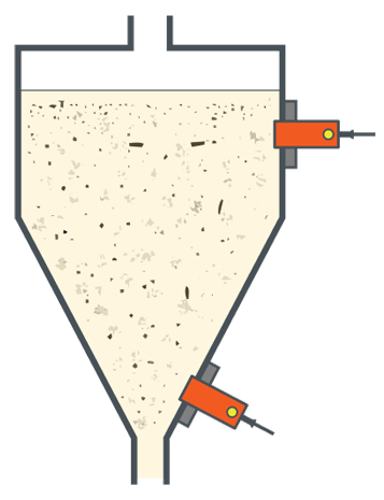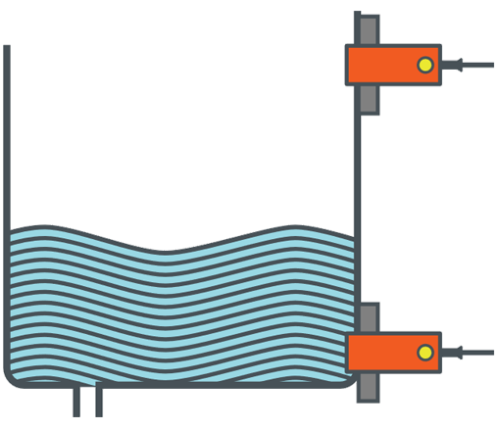- Capacitive sensors by application
- Technology overview
Technology overview

Capacitive sensors detect any material with or without contact. With ifm’s capacitive proximity sensors, the user can adjust the sensitivity to detect liquids or solids even through non-metallic tanks or vessels.

A capacitor consisting of two plates generates an electrical between the plates when supplied with power. Any material entering this field changes the capacitance on these plates.

A capacitor can also consist of a single plate. In this case, the second “plate” is earth ground.
All capacitive sensors have the same basic components:
- Housing – various shapes, sizes and materials of construction
- Basic sensor element – varies depending on the technology
- Electronics – evaluates what the sensor detects
- Electrical connection – provides power and signal(s)
In the case of capacitive sensors, the basic sensing element is a single plate capacitor where the connection is earth-grounded. When a target is moved into the sensing field, the capacitance changes and the output is switched.
- Capacitor
- Connection
- Sensing face
Influences on sensing range
Our datasheets specify 3 different detection distances.
- Sensing range refers to the nominal range defined during development and is based on a target of some standard size and material.
- Real sensing range takes into account component deviations at room temperature and is at worst 90% of the nominal sensing range.
- Operating distance also takes into account switch point drift due to humidity, elevated temperature, etc. and it is at worst 90% of the real sensing range. This is the distance that should be evaluated if sensing distance is critical.
| Detection zone | |
|---|---|
| Sensing range (mm) | 4 |
| Real sening range Sr (mm) | 4 ± 10% |
| Operating distance (mm) | 0...3.25 |
Less common than target size is target shape. It is difficult to provide a correction factor based on shape, so testing should be conducted when the sensing distance is critical.
Finally, the major contributor to the sensing range influence is the dielectric constant of the target. With capacitive level sensors, the higher the dielectric constant, the easier the material is to detect. As a general rule of thumb, if the dielectric constant is > 2, the material should be detectable. The following is a general guideline of dielectric constants for some materials. This information is provided for reference only.
The image shows the general influence of shape.
Capacitive sensors for level detection
For successful level detection using capacitive sensors, make sure:
- The vessel wall is non-metal
- The vessel wall is less than ¼” – ½” thick
- There is no metal in the immediate vicinity of the sensor
- The sensing face is placed directly on the vessel wall
- Both the sensor and the vessel are grounded at the same potential
 |
 |
| High and low level particulate detection | High and low level liquid detection |